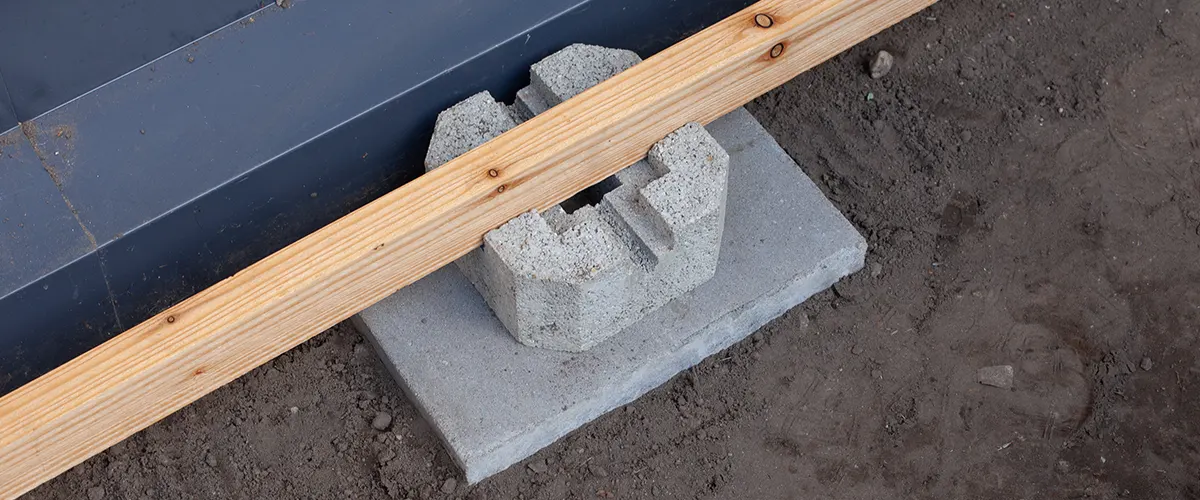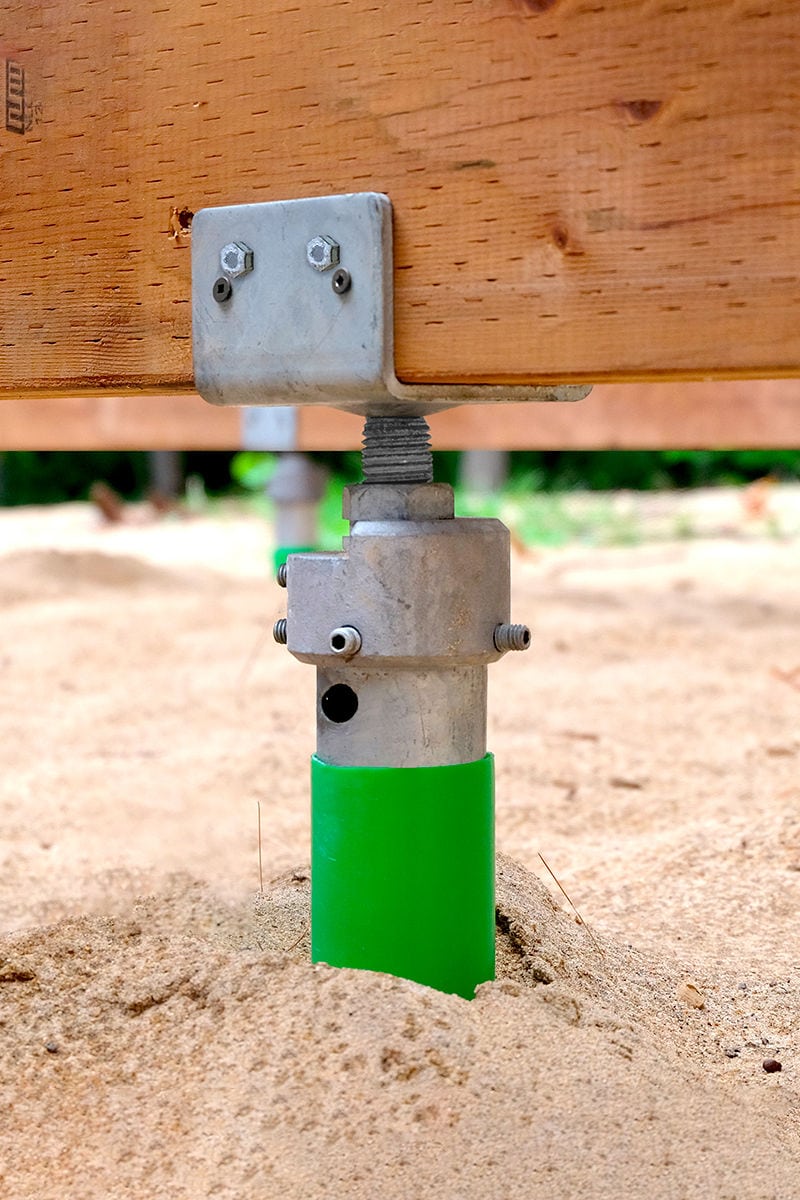A Strong Structure for Your Sanctuary: Discovering the Value of Deck Footings in Outdoor Frameworks
A Strong Structure for Your Sanctuary: Discovering the Value of Deck Footings in Outdoor Frameworks
Blog Article
Choosing the Right Deck Footings for Stability and Sturdiness
The durability and safety and security of your deck depend greatly on the kind of grounds you select, as they supply the important assistance and stability to endure the examination of time. In this conversation, we will certainly check out the different types of deck footings, think about the vital factors to evaluate when making a choice, and delve into the pros and cons of various alternatives.
Kinds Of Deck Grounds
These footings consist of a round opening filled with concrete, which offers a solid foundation for the deck articles. Concrete pier footings are fairly simple to set up and use exceptional security, making them a prominent option for lots of deck jobs.
One more sort of footing is the helical heap ground. Helical stacks are steel shafts with helical plates connected to them. These grounds are set up by screwing them into the ground, which creates a safe and secure structure for the deck. Helical heap footings are excellent for areas with tough dirt problems, as they can be mounted in virtually any sort of dirt. They additionally permit easy adjustment and progressing of the deck if required.
Conversely, some builders select precast concrete footings. These grounds are made from durable concrete and can be found in different sizes and shapes to fit various deck styles. Precast concrete grounds are hassle-free to set up and provide a secure base for the deck structure.
Finally, one more option is the post-in-anchor ground system. This type of ground includes driving a steel anchor right into the ground and connecting it to the deck message. It supplies versatility in terms of placing the deck messages and appropriates for decks with light-weight structures.
When picking the best sort of deck footing, it is vital to take into consideration aspects such as dirt conditions, deck lots, and local building regulations (Deck Footings). Consulting with a specialist specialist or architectural designer can help guarantee the proper footing is selected for a stable and risk-free deck
Aspects to Think About When Selecting Footings
When picking the appropriate grounds for a deck, it is vital to thoroughly take into consideration numerous factors such as soil problems, deck load, and adherence to neighborhood building regulations. These aspects play a significant role in making certain the security and durability of the deck framework.
The kind of soil on which the deck will be built identifies the type of grounds called for. On the other hand, decks constructed on clay or large soils may call for grounds that can fit the soil's tendency to increase and agreement.
One more important factor is the deck lots. The weight of the deck, consisting of the products used and any kind of prospective live loads such as furniture or celebrations, should be considered when selecting grounds. The footings should be designed to birth the weight of the deck and distribute it equally to prevent any kind of architectural issues or failures.
Finally, adherence to local building ordinance is vital. Building regulations differ from region to area, and it is necessary to comply with the specific demands established by the regional authorities. Deck Footings. These codes ensure that the deck is built safely and satisfies the necessary requirements for architectural honesty and load-bearing capability
Concrete Footings: Benefits And Drawbacks

Concrete footings provide numerous advantages and downsides when utilized as the structure for a deck. On site here the favorable side, concrete grounds supply superb stability and resilience.
Another advantage of concrete footings is their versatility. They can be put into different sizes and shapes to suit numerous deck layouts and configurations. Concrete footings can be personalized to fit the particular needs and requirements of the deck framework.
However, there are additionally some disadvantages to using concrete grounds. This can increase the total expense of the deck task and may need expert aid.

Helical Piers Vs. Sonotubes: Which Is Better?
In thinking about the foundation choices for a deck, the contrast between helical piers and sonotubes is crucial in identifying the remarkable option. Helical piers, likewise called screw stacks, are steel shafts with helical plates connected to them. They are twisted into the ground utilizing hydraulic equipment, supplying a durable and steady foundation for the deck. On the other hand, sonotubes are cylindrical kinds constructed from cardboard or fiber product that are loaded with concrete. They are put in a hole went into the ground and supply assistance for the deck.
The helical plates on the piers create a solid grasp with the soil, shifting or stopping any kind of motion of the deck. Sonotubes, on the various other hand, rely only on the concrete filling for security, which may not supply the exact same why not try here degree of strength and resistance.
In terms of installment, helical piers are fairly simpler and faster to set up compared to sonotubes. The hydraulic machinery made use of to twist the piers into the ground makes certain a quick and effective procedure. Sonotubes, on the various other hand, require excavating openings and putting concrete, which can be labor-intensive and time-consuming.
Furthermore, helical piers are an even more functional option. They can be utilized in numerous soil conditions and can be changed or enhanced if needed. Sonotubes, on the various other hand, might call for additional support, such as rebar, in specific dirt problems or locations with high lots needs.
Picking the Right Footings for Your Deck's Dimensions
For ideal structural stability, it is important to meticulously pick the ideal grounds that align with the dimensions of your deck. The dimensions of your deck, including its size, size, and elevation, play a significant duty in establishing the kind and size of grounds required.
When choosing grounds for your deck, it is important to take into consideration the load-bearing ability of the dirt. The weight of the deck, integrated with the weight of any type of furniture or people on it, exerts a significant force on the grounds (Deck Footings). It is critical to select footings that can adequately sustain this weight without moving or sinking over time.
The shapes and size of the footings ought to also be considered. Bigger decks with higher dimensions call for larger footings to give enough stability and support. The form of see this site the footings, whether they are rounded or square, depends on the style and layout of the deck. Additionally, the deepness at which the footings are mounted ought to be identified based upon the frost line in your region to stop any kind of heaving or moving due to freezing temperature levels.
Conclusion
In verdict, picking the right deck footings is important for ensuring stability and longevity. Factors such as the type of footings, the deck's dimensions, and the pros and disadvantages of different options ought to be taken into consideration.
These footings consist of a cylindrical opening filled with concrete, which provides a solid foundation for the deck messages. Concrete pier footings are fairly simple to set up and use superb security, making them a preferred choice for many deck projects.
Precast concrete grounds are convenient to install and provide a stable base for the deck structure.
It offers flexibility in terms of placing the deck posts and is ideal for decks with light-weight frameworks.
Concrete grounds use several benefits and downsides when utilized as the foundation for a deck.
Report this page